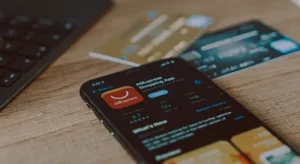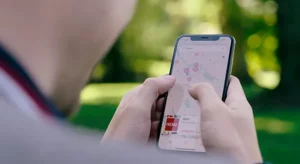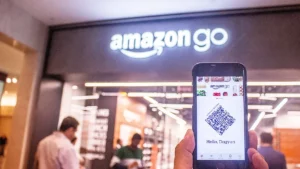Resources
How Retailers can Engage Audiences with Apps

As of 2022, about 20% of global sales happen online: not bad for something that’s only been around since 1982. Amazon and eBay’s launch in 1995 has definitely helped entrench e-commerce as a part of modern life, but there’s a little more to why it persists so much in the modern day, and it’s got a lot to do with convenience. Retailers that are available online are easy to find, easy to shop from, and most importantly, their audience isn’t limited to whoever walks into their brick and mortar store. Depending on their logistics, their audience can be anyone in the country, anyone in a handful of regions around the world, or a global audience located anywhere.
But it has a darker side to it too: global audiences mean global competition. Global competition means less profit unless you keep up with the times. Keeping up with the times means making sure that your audience, no matter how big or small, can reach you.
That could mean a website. It could mean constant emails. It could be both, or neither.
Or it could be a retail app that loads up on your customer’s phone and sits there waiting until they need to buy something.
Retail apps can be a powerful tool for retail brands, whether or not they have the brick and mortar store to go with that app, but similarly to what we’ve said before, retail apps suffer from an overabundance of competition on the app marketplace. It’s a little bit like heading to Savor Santa Ana: do you just stick to what you know already? Do you try something new?
For most consumers, sticking to brands they know means a guarantee of quality, but it doesn’t mean that they’ll purchase from you. As with any app, engaging your customers is half the battle.
Here are ways to help your retail app stand out and push consumers to engage with your brand.
1. Remind them about their shopping

It happens to the best of us: you’re shopping, and you get distracted, or you can’t decide between two products, or something takes your attention away from what you’re doing and suddenly you’ve left your cart full to the brim. For retailers on mobile, this happens a lot more often than on a website: like we said, that convenience goes both ways.
Fortunately, it’s a little easier to remind your consumers about their forgotten shopping on mobile through push notifications or little reminder messages that crop up on their screen and tell them about the purchases they’ve left in their cart.
2. Location, location, location.

Localizing your marketing to a particular area means that customers looking to get their products fast are more likely to opt to use your app or your brand over others which are located farther away – and if you tie your mobile app into your physical brick and mortar store like Nike does, you can easily turn the localization element into a game that consumers will happily play, provided that they get something out of it. Localizing your marketing on an app could be using geo-location to target users with exclusive offers or specific benefits that they won’t be able to get otherwise, and the personal element to it can definitely keep users flocking back to your app to see what new daily deals they can unlock.
3. Use your app for more than retail.

Customers today are bombarded with ads to buy, buy, buy, and it’s not always easy to cut through that noise and show them that they should buy from you, specifically. Creating an app that focuses just on retail is a good idea, but you’ll also be limited to what you can do to engage with your consumers, and there’s every chance that you’ll end up in a loop of consumers downloading your app to make one purchase and then forgetting it exists in the bowels of their mobile device, especially if they’ve turned off push notifications.
However, you can always diversify your offerings. If you’re a retailer that focuses on, for example, home decor, you can have a module within your app that showcases your products in consumers’ houses, or a blog element that talks about DIY and home decor. Your consumers might not be likely to purchase frequently from your app, but your engagement can still be high if you offer them something outside of simply buying products.
4. Use your app as a single step in the omnichannel experience.

It’s likely that you, as a retailer, have more than one place where you sell your products, be it an app and a website, an app and a social media platform, an app and a store, or a combination of all of those. Whether you have customers that prefer one or the other isn’t necessarily going to affect your business, but creating a seamless shopping experience will, and for the simple reason that customers might like the convenience and simplicity of one platform, but want to see the product for themselves in real life.
For example, if you have a retail app and a physical store, your app can show your consumer what the products they’re interested in look like in their house, check if they’re available in their nearest storefront, reserve the product for pick-up, and then allow the consumer to simply go to the store and pick it up themselves. There’s nothing more irritating for consumers than going out of their way to shop and finding that the product they’re interested in is out of stock, so your app can be the first, and most convenient, step of finding what they want to buy – which will then drive conversion to your physical store.
Apps are an excellent way for any retailer to make the most out of their brand, and there’s definitely room for every retailer to have an app that ties into their offerings. If you’re interested in creating an app for your store, but you don’t know where to start from, drop us a line: we’re happy to guide you down the right way.